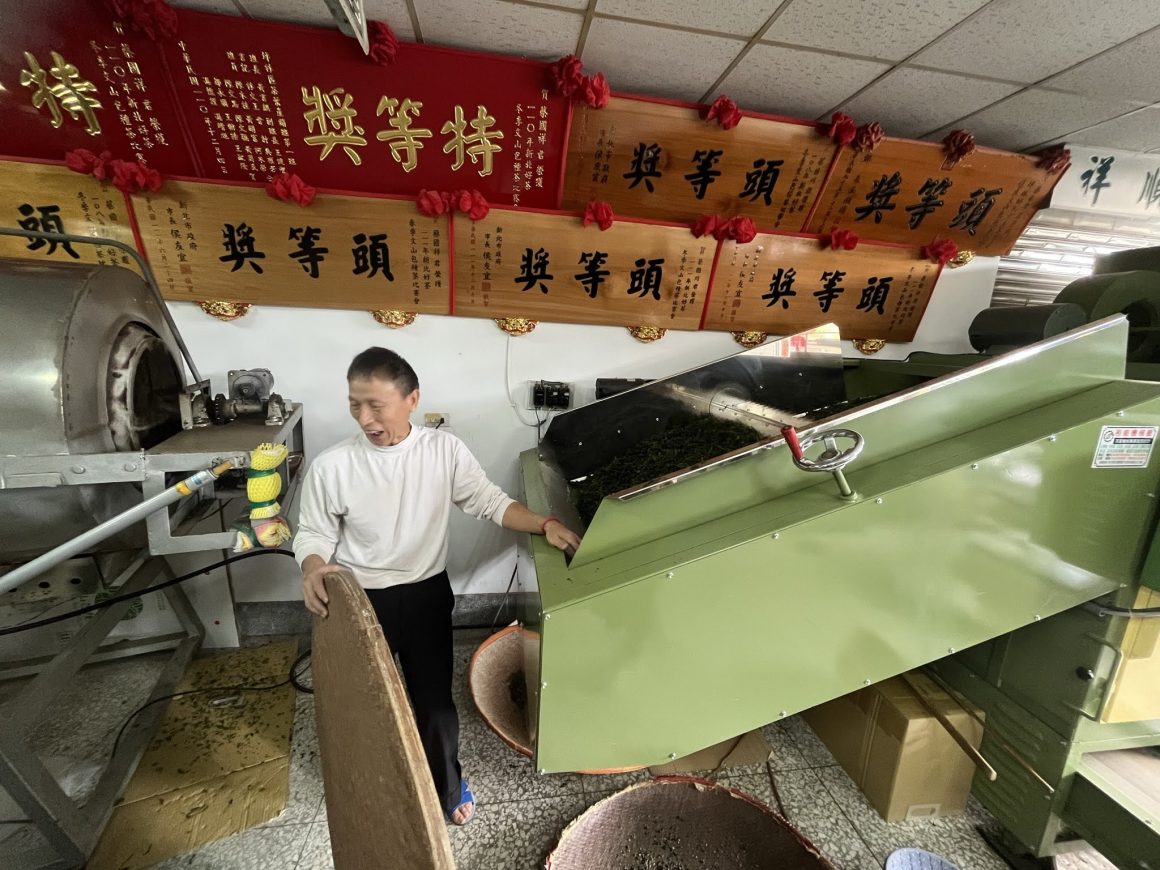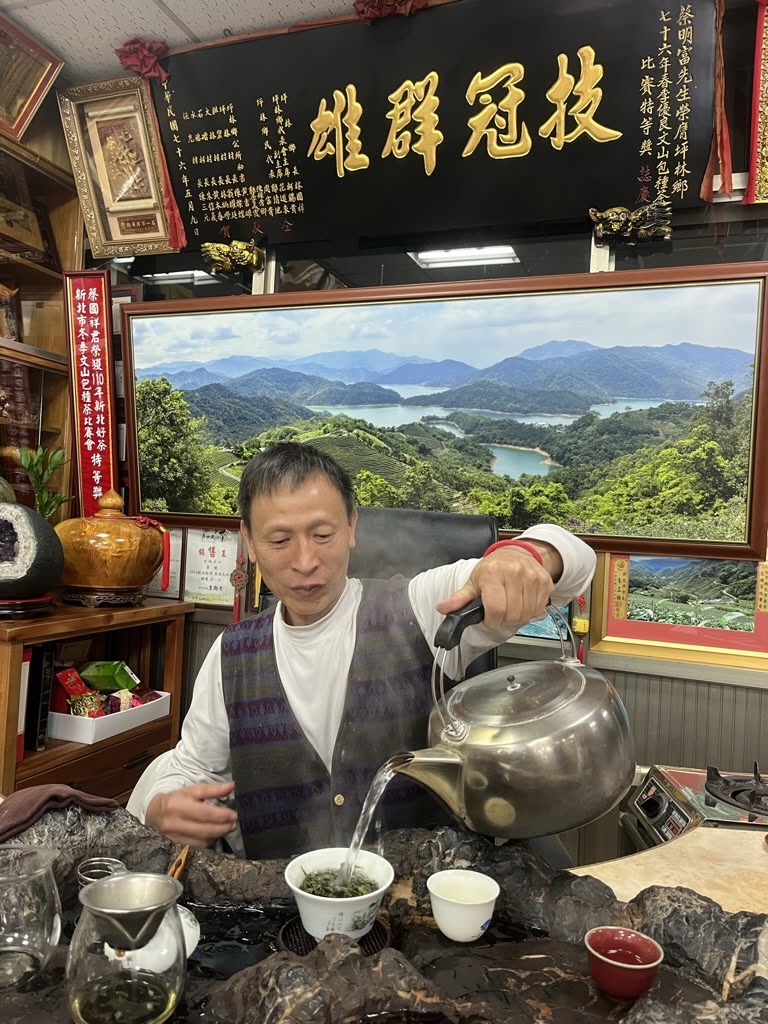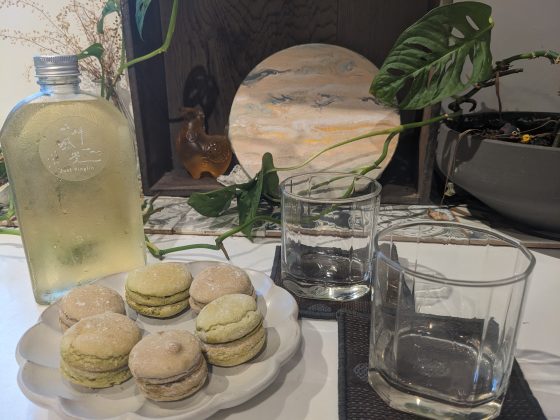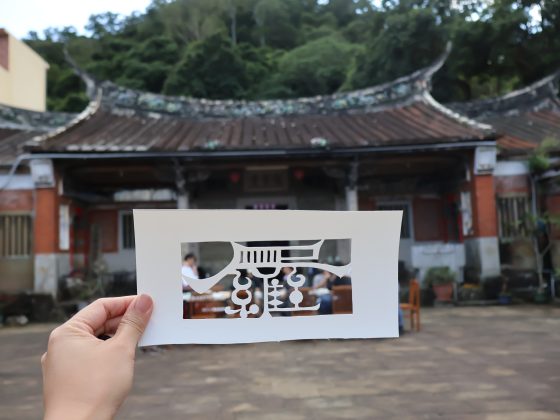Author Jeffrey Schwab
Photographer Jeffrey Schwab, Chelsea Chen
So much of tea depends on the timing.
“If you had come yesterday it would have been too early. Tomorrow is already too late.”
Cai Guoxiang’s wife, Ke Tianze greets me at the open air doorway to Xiangshun Teahouse wearing a shiny pink winter down jacket, white shirt, black pants and sports a beauty pageant smile. It is mid-November, and the location is 40km Southeast of the city, surrounded by mountains that remain verdant and densely covered. The brisk Fall air is welcome after eight months of hot and humid weather, and there is not a cloud in the sky. One step closer to the tea house bathes me in the most enchanting fragrance of tea being processed that takes my mind elsewhere, filling my brain with olfactory images of a classic Chinese garden:
A gurgling waterfall……the swooping tail of a carp as it lazily circumambulates amidst a classic rock garden……a wooden doorway with rusty hinges flanked by images of Guanyu holding his beard in one hand and his crescent blade in the other…three leaves plucked from a bush.
I am no longer in Taipei. This is Pinglin, the heart of Wenshan Baozhong green tea(文山包種綠茶), and I’m here to meet Tea Master Cai Guoxiang and his family.
The Workshop
Motion and sound.
These are the first words that come to mind when Ke Tianze ushers me into the area where her husband is interacting with what I will refer to as his “workshop” of the tea house. Every machine in the room is in full force at one point or another throughout the morning. Mrs. Ke gives me a brief introduction of each of the machines that plays a crucial part in the extremely complex and delicate process that transforms fresh leaves into drinkable tea. In previous days, the tea was harvested by machinery. Prior to 2008 it was done almost entirely by hand.

As Mrs. Ke introduces the different machines to me, her husband raises his head with a polite smile and gives me a nod. At the same moment that he greets me, his hand is inside of a cylindrical machine that rotates like a cement mixer. Inside the machine, tea leaves tumble with each rotation. Mrs. Ke tells me that the temperature within is 300 degrees Celsius. Mr. Cai’s hand remains within the machine and brushes the tea leaves casually aside.
Although the look on Mr. Cai’s face is polite, friendly, and with the crinkle of a smile that is used to having conversations, I can clearly see that he is “in the zone” at this moment. This is the master at work–winner of more than 80 awards in his decades of tea farming and processing (including receiving the highest honor Special Prize 特等獎 twice). He knows exactly what needs to be done with these tea leaves, and his comfortable greeting while his hand tumbles amidst dangerous temperatures demonstrates that he is entirely in his element.
Seasons of growth and harvest
“In the summer we harvest Honey Fragrant Black Tea (蜜香紅茶) and Eastern Beauty(東方美人). In the Spring and Winter we harvest Wenshan Baozhong Green Tea(文山包種茶). Depending on the season, you’ll get a different flavor of the green tea. Because the plant is exposed to much more sunlight, the leaves will group much faster in the Spring and have a more fragrant tang to the tea. In the Winter, the plants grow more slowly and are exposed to less sunlight, giving the tea a sweeter and more delicate flavor.”
Mr. Cai pours a cup of the tea for me and sits behind the master chair in the tea house. I feel grateful that Mr. Cai was occupied in his workshop during the morning and could only chat with what I knew would be an “idle pour” in the afternoon. After lunch at a nearby recommended restaurant and a visit to the Pinglin Tea museum, complete with traditional puppet show, I return to a much calmer tea house and it’s time to talk tea, Nature, and balance.

Mr. Cai has prepared a pot of fresh Wenshan Baozhong for me to drink and enjoy an idle pour. Drinking the tea lends itself so well to a social atmosphere, with casual peaks and valleys that take place throughout the course of multiple steepings of the same leaves. Unlike coffee, the tea leaves can be steeped several times, a slow crescendo of flavor for the palate. Just as there are subtle shifts in any conversation over time, the flavor of the tea ebbs and flows over the course of a steeping. I ask Mr. Cai if certain types of leaves lend themselves to certain types of conversation.
“You could say that,” he says over the second steeping of Wenshan Baozhong. “Each tea has its own flavor and personality, so this will lead to different topics. Additionally, different teas are harvested in different seasons, we might be discussing topics that are connected with that time of the year. Weather has a lot to do with mood, and what we talk about during that time.”
Although he did not continue his academic studies after high school, Mr. Cai has what educational psychologist Howard Gardner would refer to as “naturalistic intelligence”or “the ability to identify, classify, and manipulate elements of the environment, objects, animals, or plants.” Tea harvesting and processing is the perfect balance between man and Nature, harmonizing natural elements with human interaction to produce superior results.
“There’s no real secret other than accumulating experience.” He responds as I try to pry about why his particular shop has won so many awards. He has every right to be proud, but he is humble as ever.
“Other shop owners and farmers will ask me questions or advice. I’m happy to share helpful tips about what I’ve learned over the years. If we have a strong community of good teas, it’s good for everyone in this ecosystem. I learned techniques from my father, but most are a combination of intuition and trial and error. The first award I won was when I was 19. Now I’m more methodical and mark down the calendar with a general plan–when to harvest, when to ferment when to plant, but I have to balance that with what Nature throws my way.”
I ask him what the biggest challenge is to producing exceptional tea. Without a beat, he answers.
“The unpredictability of Nature and weather. Harvesting and fermentation has a lot to do with luck and timing. This area is at just the right latitude and elevation for Wenshan Baozhong Green Tea, but there’s a lot of rain. It’s why this kind of tea is produced in the North of Taiwan. We still need to be careful when we complete each part of the process. Take the first step for example–we have to get the solar withering just right. Traditionally this step was done outside, but we have a special room and equipment for withering so that we don’t need to worry about the elements. According to the weather or time of year, I have to take care with the timing and make sure the withering is done in just the right amount of time. The subtle care and time taken with each step in the process might be what produces an award-winning tea.”
We pause to remove a dangling spider that has become a passive eavesdropper. Insects and “small friends” are often attracted to the sweet aroma of fermentation, and I note that no shop on the street smells as fragrant as this one.
“I’ve always liked tea. It was never a chore for me. I grew up with this in my life. Our farm was bigger then, we even planted rice, but I converted that all to tea fields. There were differences between the way that my father handled the harvesting and fermentation, sure. At that time, there was more skepticism about doing anything with tea that wasn’t done by hand, but the truth is we can harvest and take care of the process a lot more quickly and a lot more accurately now, and we don’t need as many people. Regarding social media or marketing, this isn’t my area. I leave this up to my daughters and the younger generation–they also have to find their own way. Most tea drinkers want to drink the tea they buy–you can’t drink an advertisement.”
The Sendoff
At the end of the day after we have had our fill of Wenshan Baozhong, I purchase a simple package of the tea for a rainy day. Xiangshun Tea House’s customer base depends more on word of mouth, and since the shop opened in 1997, Mr. Cai has felt he’s “opened to the world.” There are customers who have traveled to his shop specifically to taste and buy his tea from Korea, Japan, the US. His dedication to his craft is all the marketing he needs to keep the business running for the time being. I take my tea, and Mrs. Ke gives me a bag of homegrown passion fruit to accompany me on my return journey. I step out into the street, the alluring fragrance of fermentation and time embedded into my memory.












